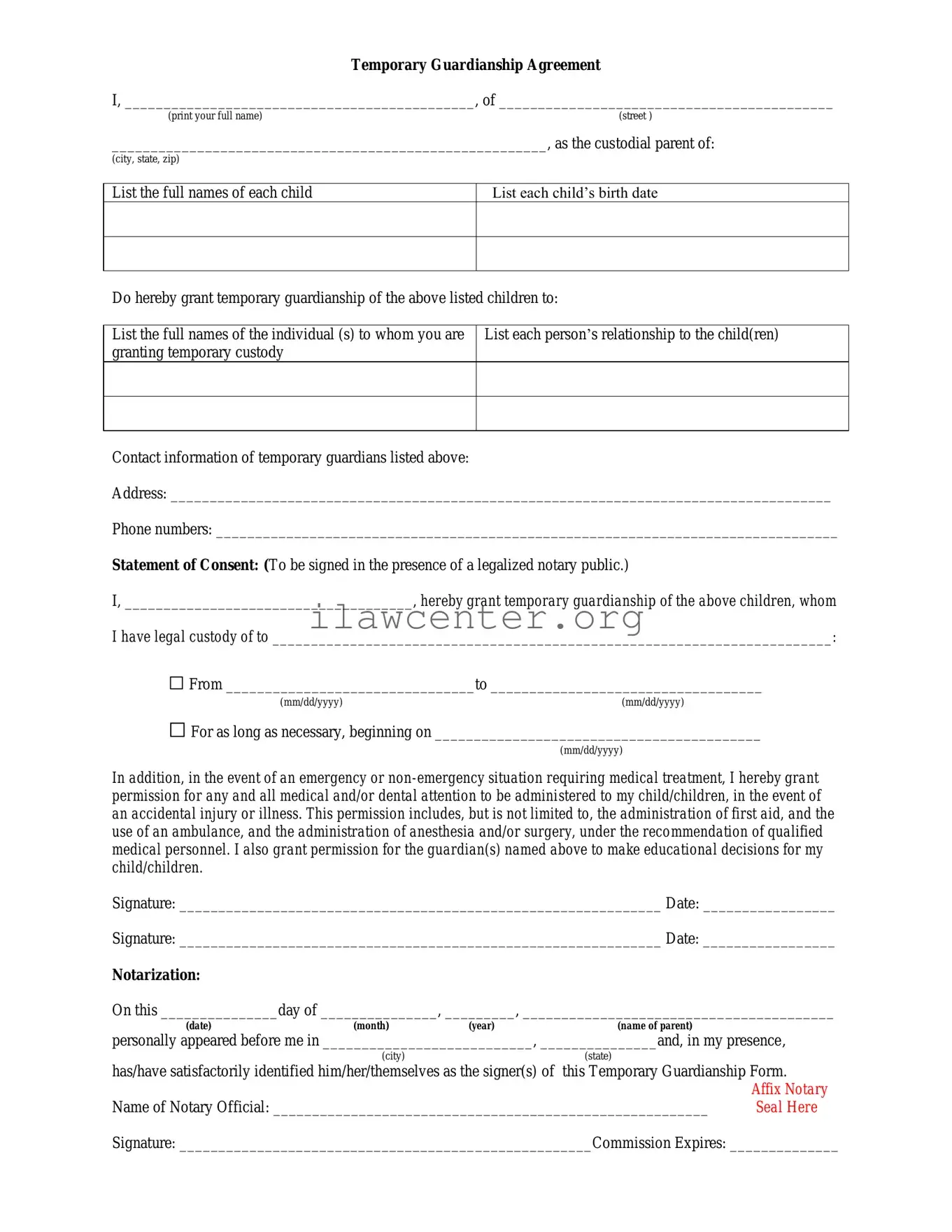Instructions on Utilizing Temporary Custody
Once you have obtained the Temporary Custody form, it is essential to fill it out accurately to ensure the process moves forward smoothly. The information you provide will lay the groundwork for what comes next in your custody proceedings. Take your time and ensure that every section is completed with clarity and care.
- Begin by reading the entire form carefully to understand the information required.
- In the first section, fill in your name, address, and contact information. Ensure that the details are current and correct.
- Next, provide the name of the child or children for whom you are seeking temporary custody. Include their date of birth as well.
- In the subsequent section, specify your relationship to the child. This might include terms such as parent, grandparent, or guardian.
- Clearly state the reason for requesting temporary custody. Provide detailed information that may include past circumstances or relevant incidents.
- Complete any sections that address visitation rights. Note how often you believe the other parent or guardians should have visitations.
- Include information about the other parent or guardian, such as their name, address, and contact information, if applicable.
- Next, review any required attachments. You may need to include supporting documents such as previous court orders or relevant correspondence.
- Once everything is filled out, review the form for accuracy. Ensure that all information is complete and correct.
- Finally, sign and date the form in the designated areas, then make copies for your records before submitting it as instructed.

